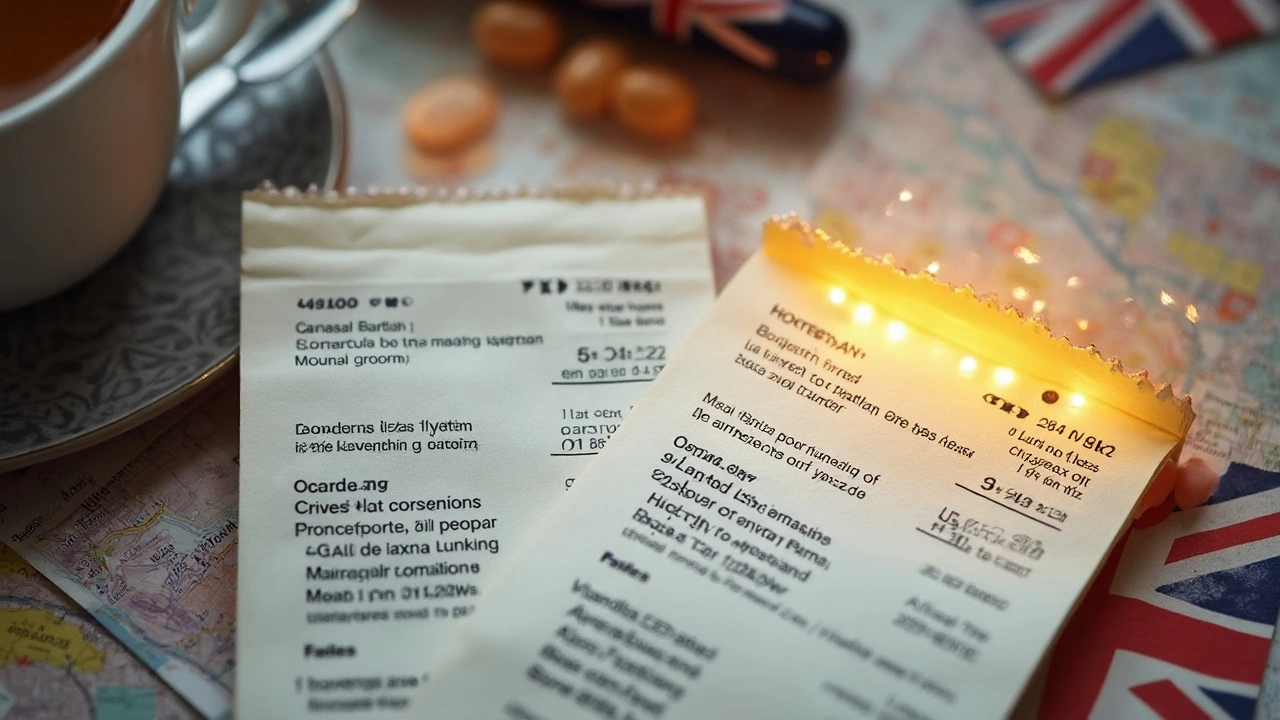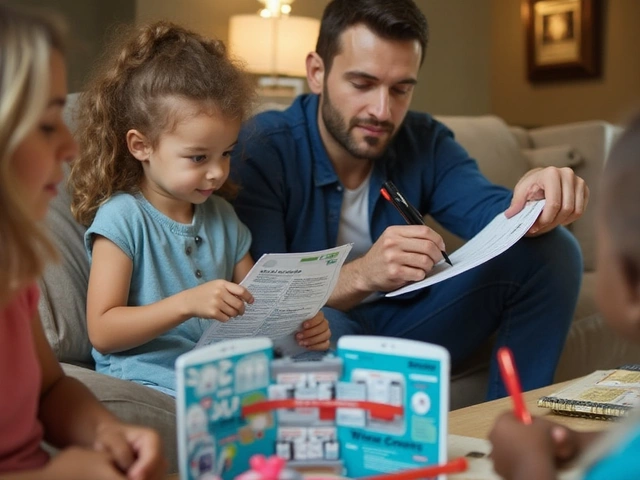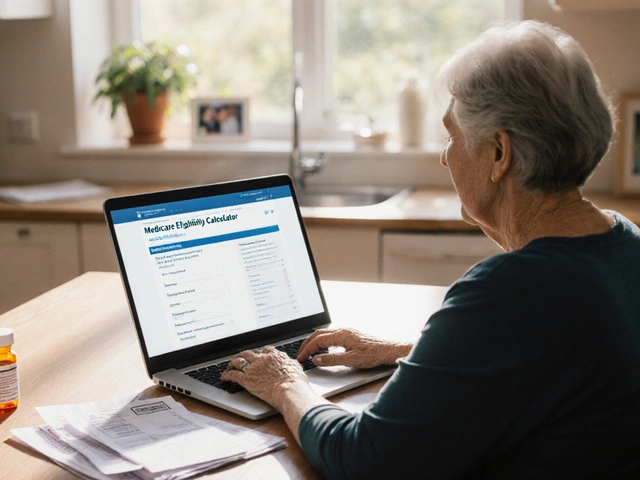Prescription prices can feel like a roulette wheel—one pharmacy charges $200 while another asks for $20. That’s why GoodRx is all over ads and pharmacy counters. People grab those yellow coupons hoping for a magic fix to high prices. But what’s the real story? Why do the savings seem almost too good to be true?
The truth: GoodRx isn’t a charity, and pharmacies don’t just hand out discounts from the goodness of their hearts. They’re using deals made with middlemen called pharmacy benefit managers (PBMs). GoodRx partners with these PBMs, who negotiate prices in bulk, and then passes those discounts along to you. When you hand that coupon to the pharmacist, the PBM gets paid a little, GoodRx gets a little, and you (ideally) save a lot—if you know how to play the game.
Here’s the catch—GoodRx coupons only work when you skip your insurance. By paying cash, you could lose out on money going toward your deductible, and your insurance might not record that you filled your prescription. Sometimes the GoodRx price is even higher than your insurance copay; you actually have to shop around for each refill. So while the app promises easy savings, it’s not always the cheapest or safest bet. Knowing when and how to use it makes all the difference.
- How GoodRx Really Works
- The Discounts: Who Pays and How?
- Hidden Pitfalls and Trade-Offs
- Tips for Getting the Best Deal
How GoodRx Really Works
GoodRx makes a big promise: quick savings with just a few clicks or a printed coupon. The whole system runs on a network most people never see—pharmacy benefit managers (PBMs). These PBMs work out discount deals with drug companies and pharmacies in bulk. GoodRx teams up with several PBMs, collects the best rates, then shows them on the GoodRx app or website for free. That’s why you sometimes see wild differences in price for the exact same medication, even at different locations of the same chain.
Here’s the weird part—these discounts often have nothing to do with your insurance. When you use GoodRx, you’re buying the medicine as a cash customer. This means you hand the pharmacist your GoodRx coupon instead of your insurance card, and you pay whichever price is lower. But that’s where it gets interesting: the price isn’t always a bargain compared to insurance.
So what does the typical GoodRx process look like? It goes like this:
- Search for your prescription in the GoodRx app or website. Type the exact drug name, including strength and quantity, since prices change a lot.
- Check the list of local pharmacies and their GoodRx prices. There might be a huge spread. For example, as of January 2024, generic Lipitor (atorvastatin) ranged from $10 at one big-box pharmacy to $38 at a smaller chain.
- Show the coupon to the pharmacist—either on your phone or print it out. They use the special numbers on the coupon (BIN, PCN, Group, ID) instead of your insurance info.
- Pay the GoodRx price up front, in cash or with a card. No paperwork, no waiting for approval.
If you’re curious how much prescription prices can actually swing with GoodRx, here’s a real-world comparison for three common drugs (data from mid-2024):
| Drug Name | 30-Day Retail Price (No Coupon) | GoodRx Lowest Price |
|---|---|---|
| Atorvastatin (generic Lipitor) | $97 | $12 |
| Lisinopril | $30 | $9 |
| Albuterol Inhaler | $77 | $28 |
Notice the huge difference? That’s what draws people in. GoodRx thrives on these price gaps, making it easier for folks without insurance, or with high deductibles, to find a break. But remember: you’re stepping outside your coverage when you use it, so track your purchases if you need to submit receipts for insurance later. GoodRx works best when you compare, question, and don’t assume any one pharmacy is the cheapest every time.
The Discounts: Who Pays and How?
So, who’s really paying for these eye-popping discounts on prescriptions? Where’s the money coming from? Here's what’s happening behind the scenes. GoodRx doesn’t own a secret stash of cheap medicine. Instead, they work with pharmacy benefit managers (PBMs), which are big companies that negotiate drug prices for insurance networks and employers. PBMs make deals with pharmacies to set lower prices. GoodRx partners with these PBMs and plugs their discount prices straight into its app and coupons.
When you buy a prescription using GoodRx, you’re skipping your insurance and paying out of pocket, but at the negotiated PBM price. The pharmacy gets paid—but it’s less than what someone might pay using regular retail prices or sometimes even insurance. GoodRx keeps a piece of the fee, and the rest goes to the PBM running the deal. Pharmacies agree to this because it draws in more customers, hoping you’ll pick up snacks or refills, too. For GoodRx, it’s a win-win: more users means more data, fees, and leverage with PBMs and pharmacies.
Sometimes these prices really are shockingly lower. Like, the cholesterol drug atorvastatin can go from $70 cash price at a major chain down to about $10 with GoodRx. But here’s the thing: these prices aren’t identical everywhere, and they can change monthly. You’re basically taking advantage of a price war happening between pharmacies and their suppliers, and GoodRx gets a cut for sending you their way.
Here’s what the breakdown of who pays might look like for a common generic medication:
| Who | Main Role | What They Pay/Get |
|---|---|---|
| Pharmacy | Fills the script | Gets paid less than retail, but may get more customers |
| PBM | Negotiates price | Gets a fee from pharmacy, shares some with GoodRx |
| GoodRx | Distributes coupon/app | Gets a share of the PBM fee each time coupon is used |
| You | Buys the med | Pays the discounted price, skips insurance |
If you’re wondering, "Is this too good to last?"—there’s definitely pressure on the whole system. Pharmacies sometimes push back or stop accepting big discounts if they lose money. PBMs and GoodRx need to keep everyone happy for the discounts to keep rolling. This back-and-forth is why it pays to double-check prices every time you refill.

Hidden Pitfalls and Trade-Offs
GoodRx can slash your bill at the counter, but there are some real downsides. First, when you use GoodRx, you're not using your insurance. Pharmacies treat that coupon as if you're just paying cash, which means the money spent doesn't count toward your deductible or out-of-pocket max. If you end up in a situation where you need your insurance—like surgery or other expensive meds—savings now might cost you later.
Here’s something else people miss: using GoodRx means your info is being handled by someone else. GoodRx collects a lot of prescription and pharmacy data every time you use their coupons. According to their privacy policy, this data can be shared with third parties, including for advertising. If you’re big on privacy, that’s a huge trade-off.
Then there's price inconsistency. The same medication can be a steal at one pharmacy and highway robbery at another, even with the identical GoodRx coupon. Prices shift daily—sometimes even by the hour—because they depend on real-time deals with PBMs. You really have to check on your phone before every single refill. Don’t assume yesterday’s price will hold.
- GoodRx can’t always be used alongside pharmacy loyalty programs—sometimes you have to pick one discount over another, which can be annoying when juggling multiple scripts.
- Some pharmacies, like Walmart or big grocery chains, run their own discount programs that occasionally beat GoodRx prices for specific generics.
- If GoodRx is cheaper than your insurance—and you consistently use it—make sure your doctor and pharmacist know, so there’s no confusion about your medication records.
And don’t forget, some pharmacies just don’t like GoodRx. There have been reports, especially in 2024, of smaller stores refusing to honor coupons or charging extra “processing” fees. Always call ahead or check the GoodRx website to see if your pharmacy plays along.
The bottom line: You’re getting a solid deal sometimes, but it’s not automatic—and you’re trading convenience, insurance tracking, and a bit of privacy for those cash prices. If you want to keep racking up those savings on GoodRx, you really have to pay attention to the details.
Tips for Getting the Best Deal
Saving money at the pharmacy takes a little hustle, but you can actually slash your drug costs with a few smart moves. Here’s how to make the most of GoodRx without tripping up.
- Compare, don’t assume. Always check the GoodRx price and your insurance copay before buying. Sometimes, your insurance beats GoodRx—even if the coupon looks golden. You’d be shocked how often that happens, especially for generic prescriptions.
- Watch your deductible. If you use GoodRx, your purchase usually doesn’t count toward your insurance deductible or out-of-pocket maximum. For folks with high medical costs, that could sting later.
- Call ahead to the pharmacy. Prices on GoodRx can change and aren’t guaranteed until you pay. It’s worth calling the pharmacy to make sure the quoted price matches what you’ll actually pay. If not, ask them to look up the latest coupon code.
- Try different locations. Even pharmacies from the same chain—like CVS or Walgreens—can have different prices with GoodRx. The app lets you check prices by zip code, so shop around locally. You’ll be surprised how the price can drop, even just a mile down the road.
- Print or save the GoodRx coupon. Show it right at the counter—don’t rely on the pharmacist to apply a discount automatically. They need the specific codes from your coupon, every time you fill.
- Check for manufacturer discounts. Sometimes, the drug manufacturer offers a copay card or discount that beats what GoodRx offers, especially for name-brand meds. Go to the drug’s official website and compare offers.
As for privacy: GoodRx collects some data when you use their coupons. According to a 2023 Consumer Reports investigation, "Using pharmacy discount cards may expose some personal information, though not as much as using insurance."
"Always ask your pharmacist to run both insurance and GoodRx so you can compare on the spot," advises the National Community Pharmacists Association.
A quick look at price differences (based on GoodRx internal data from 2024):
| Drug (Generic) | Average Insurance Copay | GoodRx Price | Possible Savings |
|---|---|---|---|
| Lisinopril | $12 | $8 | $4 |
| Atorvastatin | $20 | $9 | $11 |
| Amoxicillin | $10 | $12 | -$2 (More with GoodRx) |
Bottom line? Don’t just grab the first discount—scan your options. With a little prep, you can outsmart the pricing maze and make GoodRx work for you.





